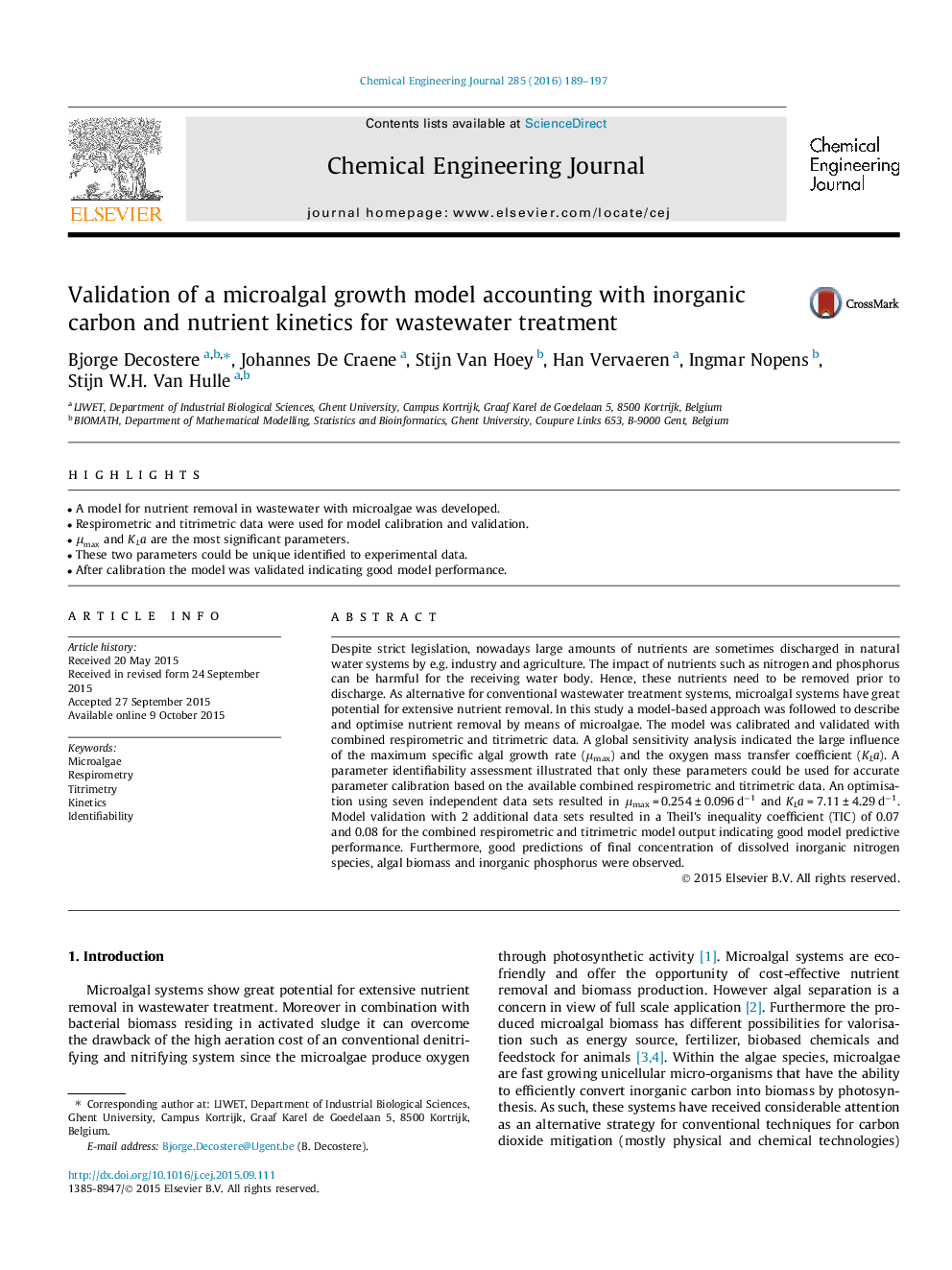| Article ID | Journal | Published Year | Pages | File Type |
|---|---|---|---|---|
| 6583113 | Chemical Engineering Journal | 2016 | 9 Pages |
Abstract
Despite strict legislation, nowadays large amounts of nutrients are sometimes discharged in natural water systems by e.g. industry and agriculture. The impact of nutrients such as nitrogen and phosphorus can be harmful for the receiving water body. Hence, these nutrients need to be removed prior to discharge. As alternative for conventional wastewater treatment systems, microalgal systems have great potential for extensive nutrient removal. In this study a model-based approach was followed to describe and optimise nutrient removal by means of microalgae. The model was calibrated and validated with combined respirometric and titrimetric data. A global sensitivity analysis indicated the large influence of the maximum specific algal growth rate (μmax) and the oxygen mass transfer coefficient (KLa). A parameter identifiability assessment illustrated that only these parameters could be used for accurate parameter calibration based on the available combined respirometric and titrimetric data. An optimisation using seven independent data sets resulted in μmax = 0.254 ± 0.096 dâ1 and KLa = 7.11 ± 4.29 dâ1. Model validation with 2 additional data sets resulted in a Theil's inequality coefficient (TIC) of 0.07 and 0.08 for the combined respirometric and titrimetric model output indicating good model predictive performance. Furthermore, good predictions of final concentration of dissolved inorganic nitrogen species, algal biomass and inorganic phosphorus were observed.
Related Topics
Physical Sciences and Engineering
Chemical Engineering
Chemical Engineering (General)
Authors
Bjorge Decostere, Johannes De Craene, Stijn Van Hoey, Han Vervaeren, Ingmar Nopens, Stijn W.H. Van Hulle,
